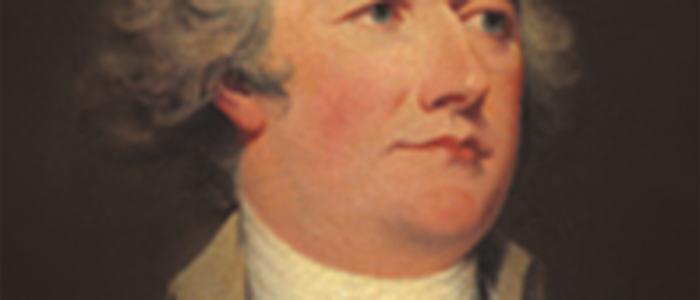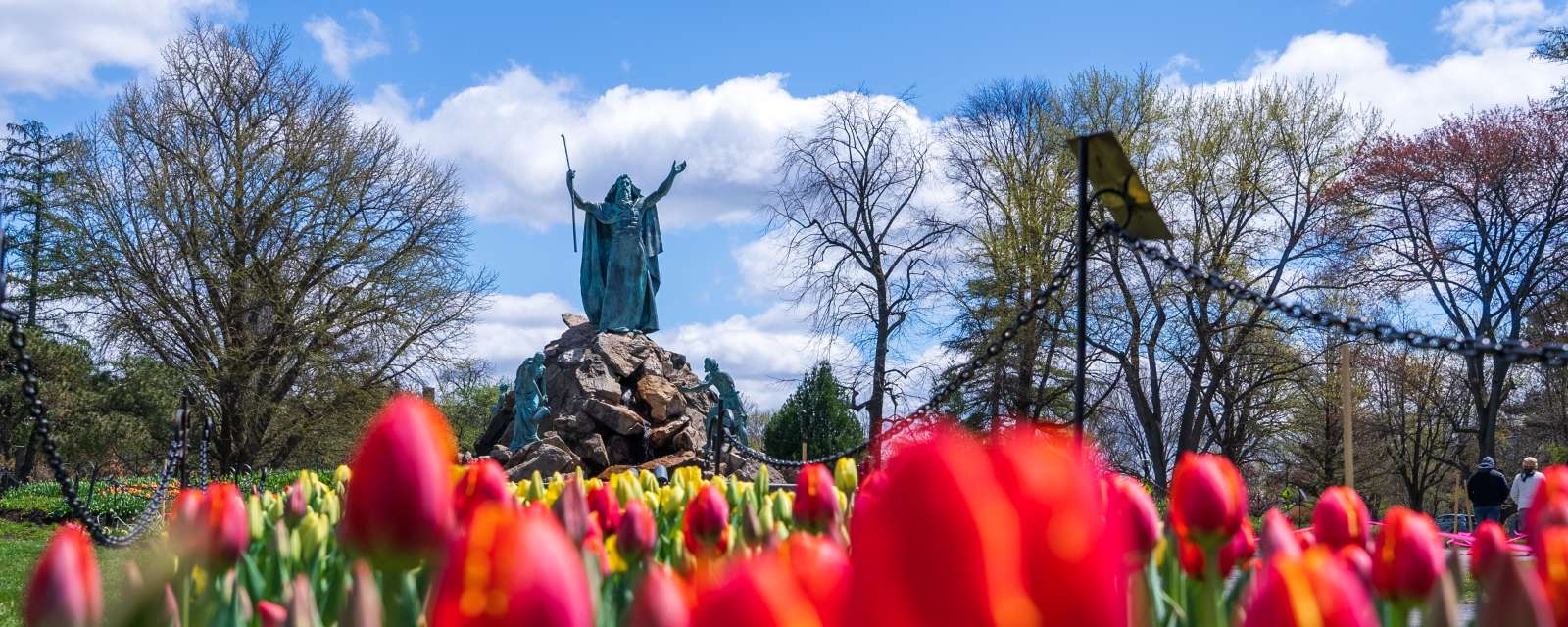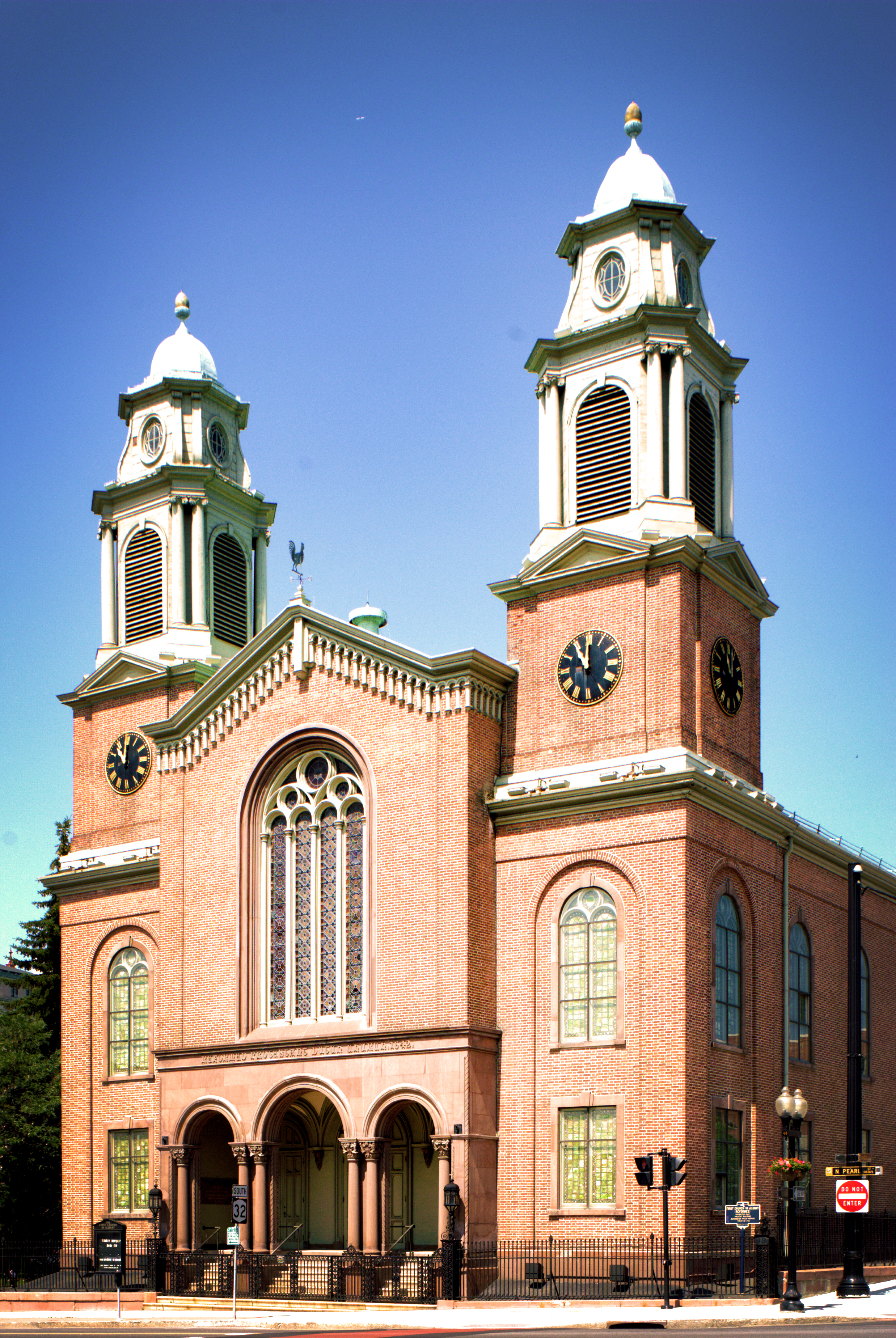
Before he was a Broadway sensation, Alexander Hamilton spent much of his time right here in Albany, NY. The city formed a backdrop for some of the most important arguments he had -- including the one that led to his untimely death.

Schuyler Mansion State Historic Site
Alexander Hamilton married Elizabeth Schuyler, a member of one of Albany's most prominent families. The Schuylers made their home at in a stately manor that overlooked the Hudson River. Schuyler Mansion is now a state historic site celebrating its 100th year as a heritage site with a restoration that has brought it back to the condition it was in when it hosted the couple's wedding. Prior to their marriage, Hamilton wrote to a friend suggesting the qualities that he would require in a wife -- Elizabeth, Eliza to her friends -- exceeded all his expectations. She was intelligent, beautiful, sensible, and it probably didn't hurt that she belonged to one of the wealthiest families in the state. While Hamilton probably wasn't Philip Schuyler's ideal beau for his second oldest-daughter, Schuyler had already seen one child elope, and historians theorize that he agreed to the marriage because he wasn't eager to see another child follow suit. Visit the mansion and see the parlor where the couple was married, and the portrait of Eliza that hangs there.
First Church in Albany
Established in 1642, the First Church in Albany is the second oldest church in the state. The Hamiltons attended church there, and their marriage and baptism records are there. After the deadly duel that killed Hamilton, Reverend Eliphalet Nott delivered a stirring eulogy for the him at the church, which was considered a driving force in the eventual outlawing of dueling. Visit the church and see the 1656 pulpit, which the congregation purchased for a mere 25 beaver skins (lost when the vessel carrying them capsized -- but the Dutch gave it to us anyway. Thanks, guys.)

The Court of Appeals
The Court of Appeals is New York State’s highest court, and was completed in 1842, well-after Hamilton’s time. But during Hamilton's time, the court was known as the “Supreme Court of Judicature,” and Hamilton argued several important cases there. We know Hamilton as one of this country's founding fathers, but we have to remember that during his life, his ideas were controversial, and he was a bit of a rebel. He was a brilliant lawyer (both he and Burr studied for the law exam at Philip Schuyler's extensive library.) He went on to argue a number of cases that helped establish precedents for a strong national government. In “People v. Croswell,” in which he successfully defended a newspaper publisher against charges of libel and sedition, he established that truth trumps charges of libel. Hamilton also served as a defense attorney in “People v. Weeks,” one of the country’s first murder trials. He also litigated in Rutgers v. Waddington, taking on the Trespass Act to create a legal precedent for federal jurisdiction, and forming a basis for Federal Papers 22 and 78.

Albany City Hall
Outside City Hall stands a statue of Revolutionary War General Philip Schuyler, Hamilton’s father-in-law and mentor. It was Schuyler who chose Hamilton to serve as a Constitutional Convention delegate. Schuyler was the first New York State Senator following the revolution. But in 1791, he lost his seat to Aaron Burr. This was considered to be the beginning of Hamilton and Burr’s rivalry. Hamilton actively campaigned to keep Burr from becoming New York State governor. In 1804, the Albany Register published disparaging remarks Hamilton made about Burr at an Albany dinner party. The rivals’ feud deepened when Hamilton would not recant his remarks, and ultimately Burr challenged him to a duel. The two men, who had so much in common, came down on different sides of many of the young country’s earliest debates, but it was their personal vendettas, not their political rivalry that ultimately led to the deadly duel.







